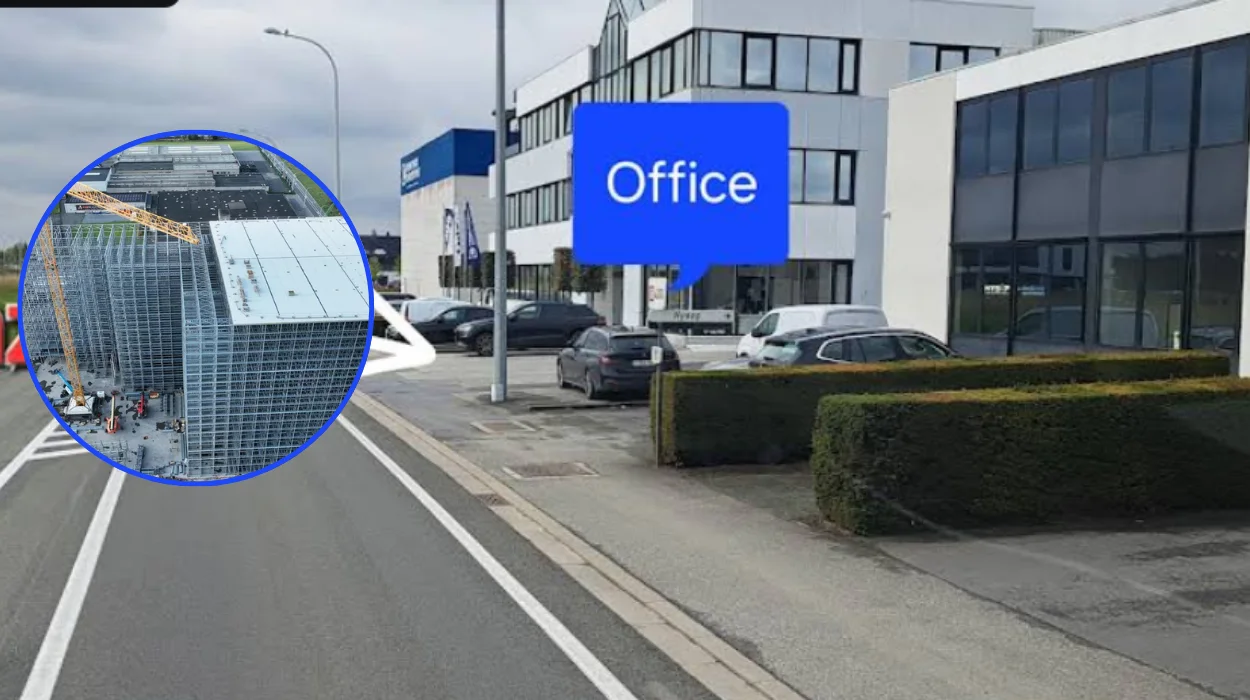Kuurne (Brussels Morning Newspaper) – Coldo, led by Thomas Demunck and Bénédict Sons, is building a 47m-tall freezer in Kuurne, opening in 2026, storing 12,000–14,000 pallets daily for clients like Clarebout and Greenyard.
As VRT News reported, Coldo, the company of Thomas Demunck and Bénédict Sons, is building a huge freezer warehouse in the Kortrijk-Noord business park in Kuurne, in the province of West Flanders, Belgium. The building will be 47 meters tall, 129 meters long and 78 meters wide, making it one of the biggest on the site.
About 65% of the storage racks are already in place. Workers are adding thick panels to keep the cold inside and pulling cables for the automated systems. Officials mentioned that testing should begin late 2025, and the warehouse is expected to open in early 2026.
“All the energy is generated by solar panels and stored in batteries,”
the couple says.
How will Coldo’s 47m Kuurne freezer handle 14K pallets a day?
The new freezer warehouse will run almost fully on machines. When a pallet comes in, small shuttles move under it to check its weight and size. They take it to an elevator that lifts it to one of the 16 levels. More shuttles on each level slide the pallets into the right place. A computer keeps track of where everything goes and controls the cold and power.
Thomas says, once that step is finished, the team will start cooling the warehouse down to -20°C. He explains that they will first leave the gates and doors open, even though it seems unusual for a freezer site. This is done to stop what they call the shrinkage effect.
When air gets colder, it contracts, and in such a large building, that change can bend walls or put pressure on the structure. To keep that from happening, the temperature will be lowered slowly, just one degree each day, until it reaches the goal of -20°C.
“We can store more than 60,000 pallets of food. Vegetable, fruit, potato, and meat producers have already reserved half of our freezer warehouse capacity,”
says Bénédict Soens.
Officials say the new warehouse is necessary due to rapidly growing demand from Clarebout, Eurofrost, Westvlees and Greenyard. When the site is fully operational, it will use between 12,000 – 14,000 pallets each day, and moved exclusively by trucks. During the peak period, up to 12 trucks will be loading or unloading each hour.
The warehouse sits on an industrial estate where the R8, E17, and A19 meet, so the heavy traffic can move easily without affecting nearby neighbourhoods. Coldo, the company behind the project, now has 49 workers but is already looking for more people to help run the new site.
“We’ll soon be launching vacancies for reception staff, planners, technicians, and staff for our loading and unloading docks,”
adds Thomas Demuynck.
A similar project took place a few years ago in Veurne, where Clarebout built one of Europe’s largest frozen potato warehouses. That site also used automation, with shuttles and lifts moving pallets through multiple levels. Like the Kuurne project, it was designed to meet rising demand for frozen food and placed near major roads to handle heavy truck traffic.



